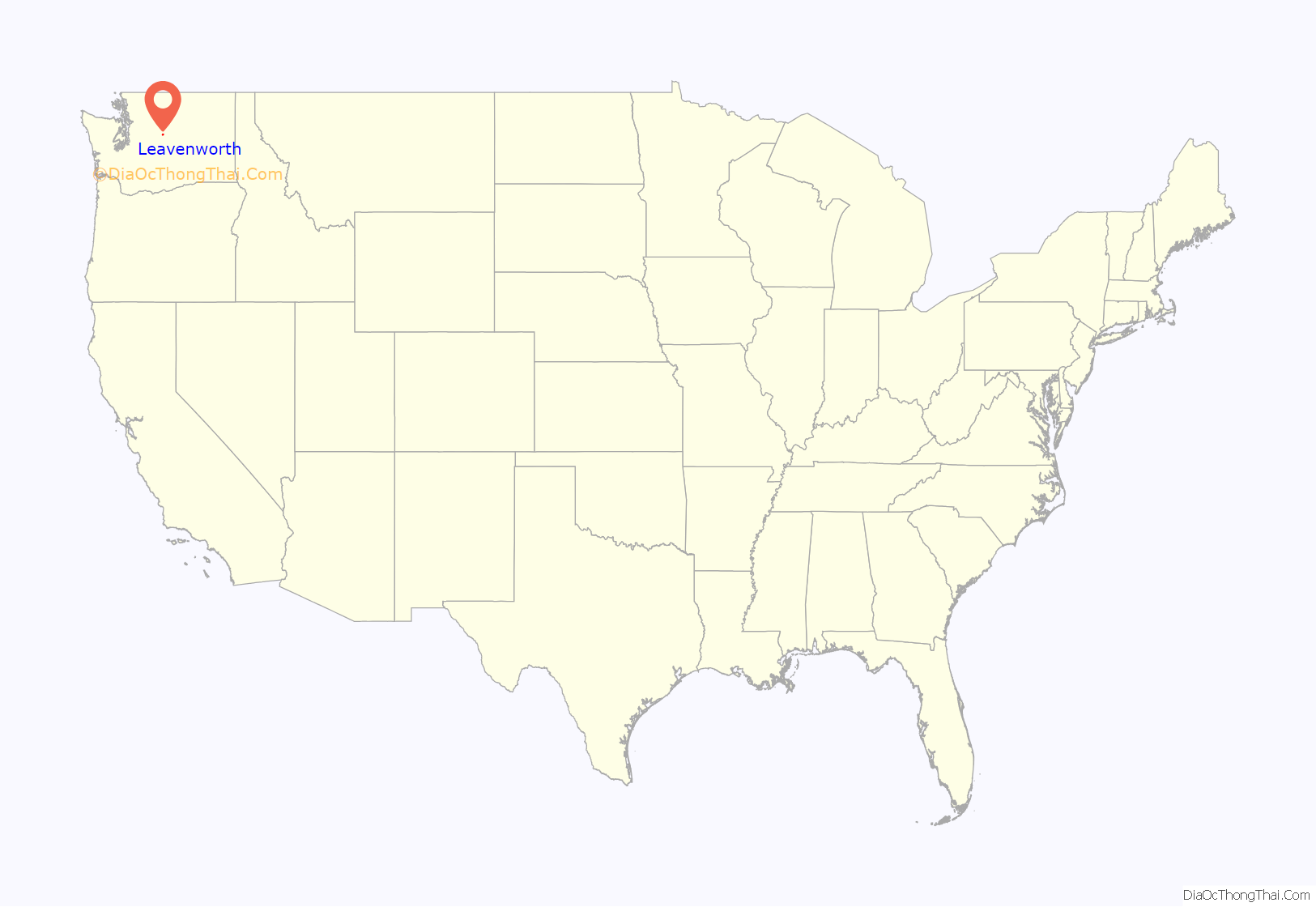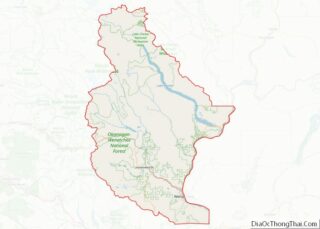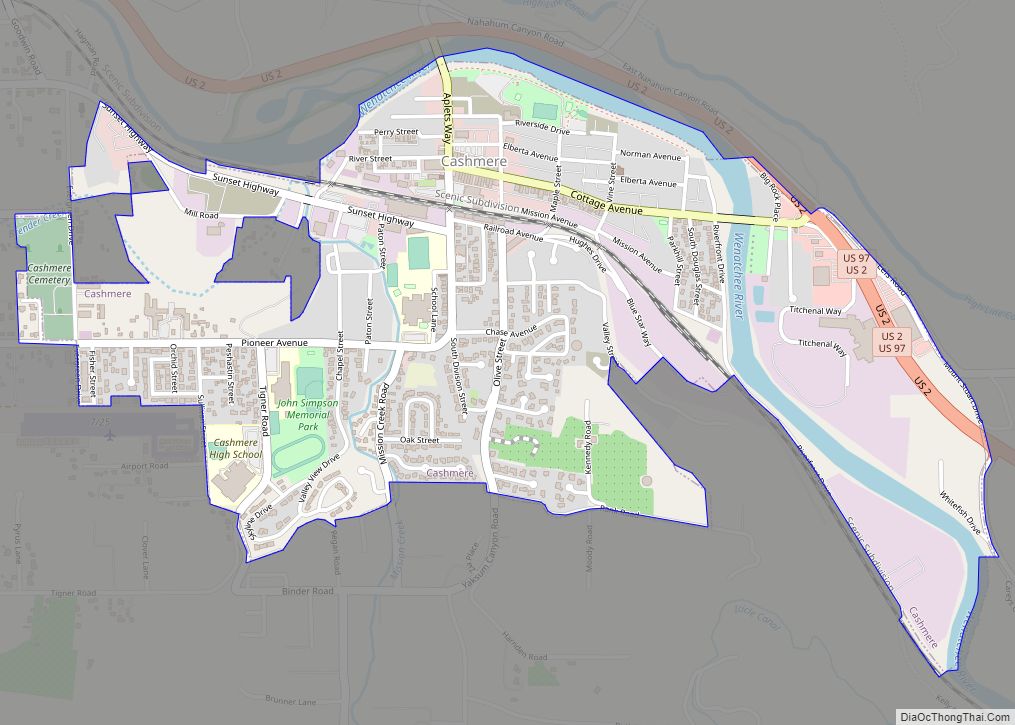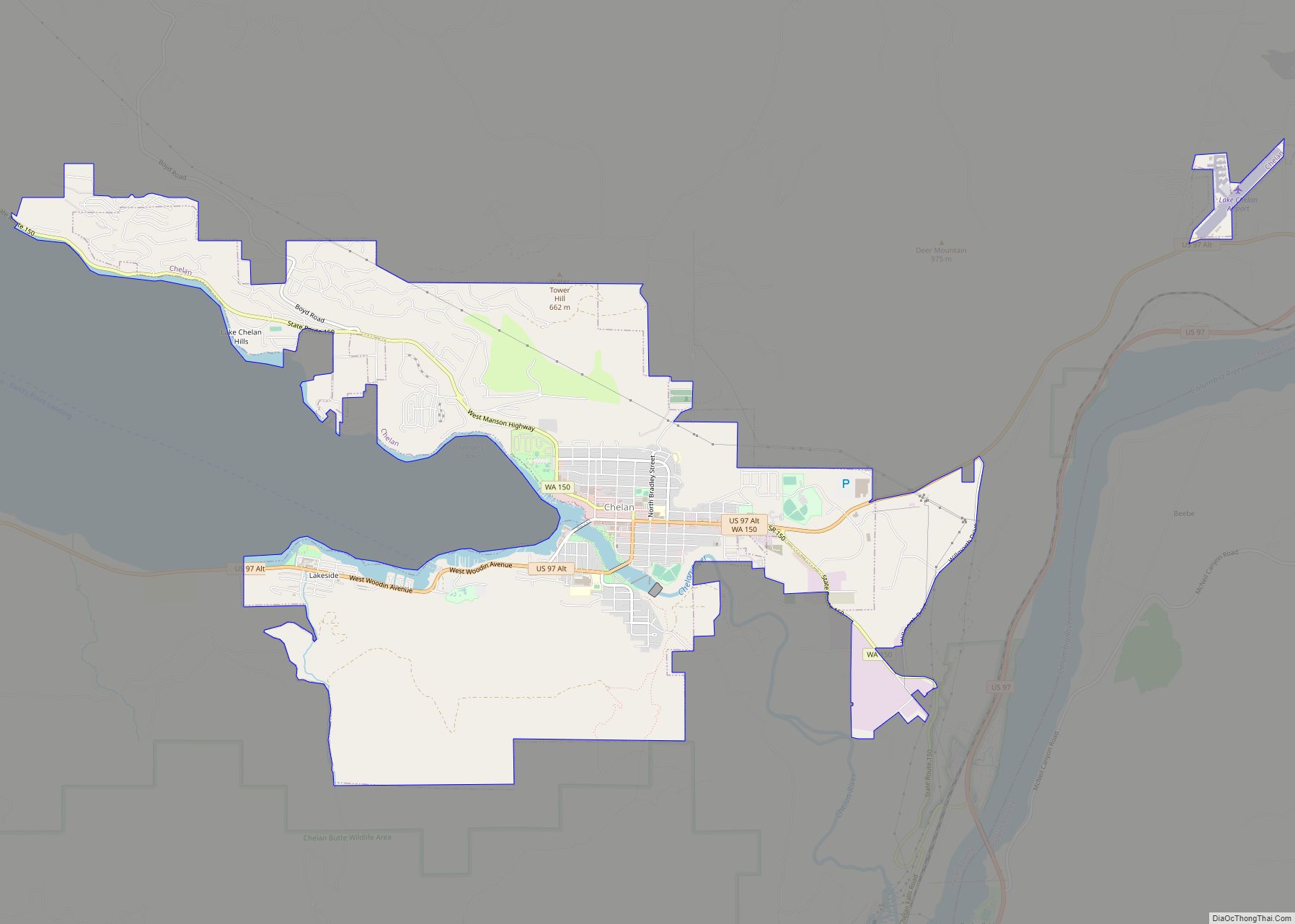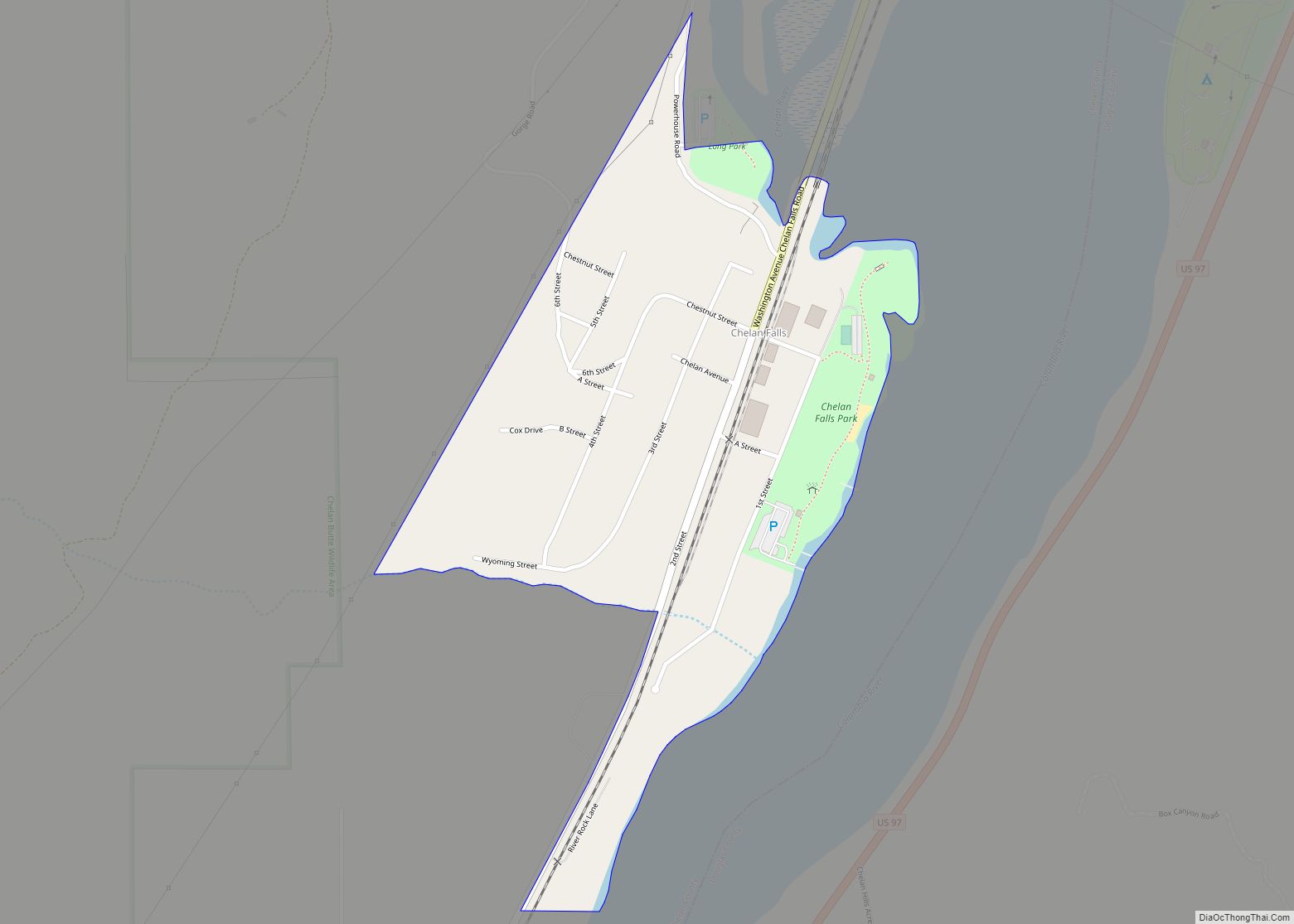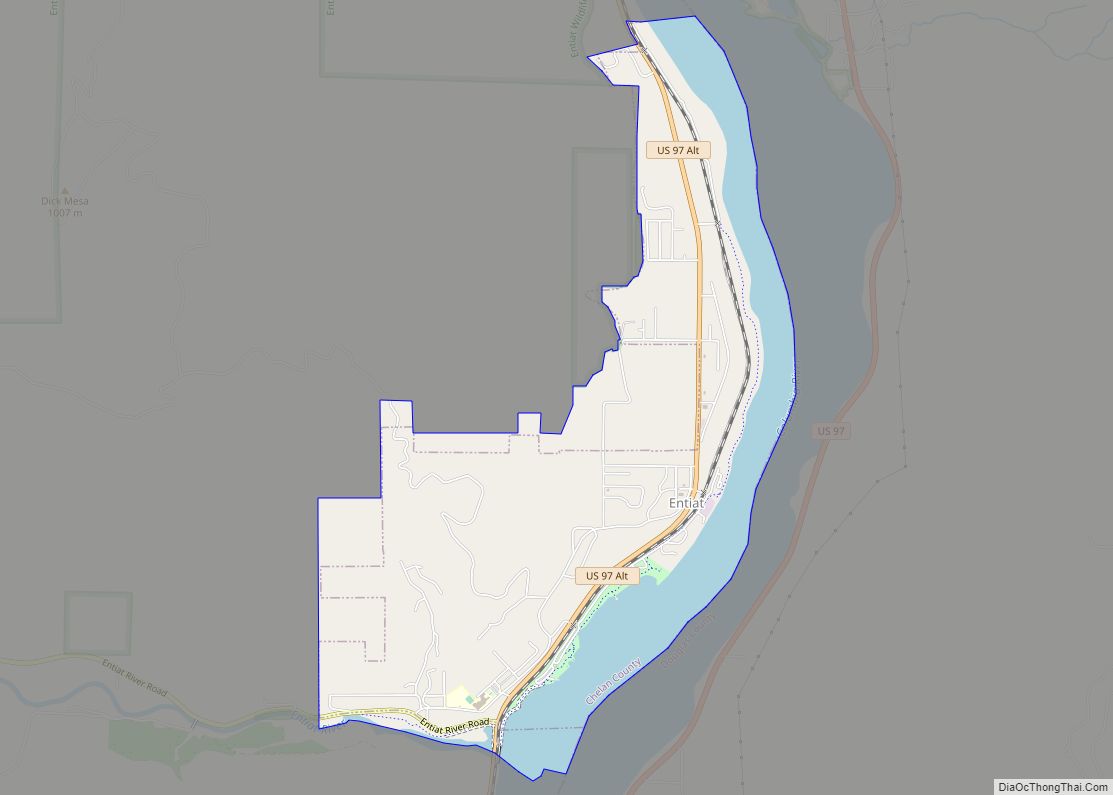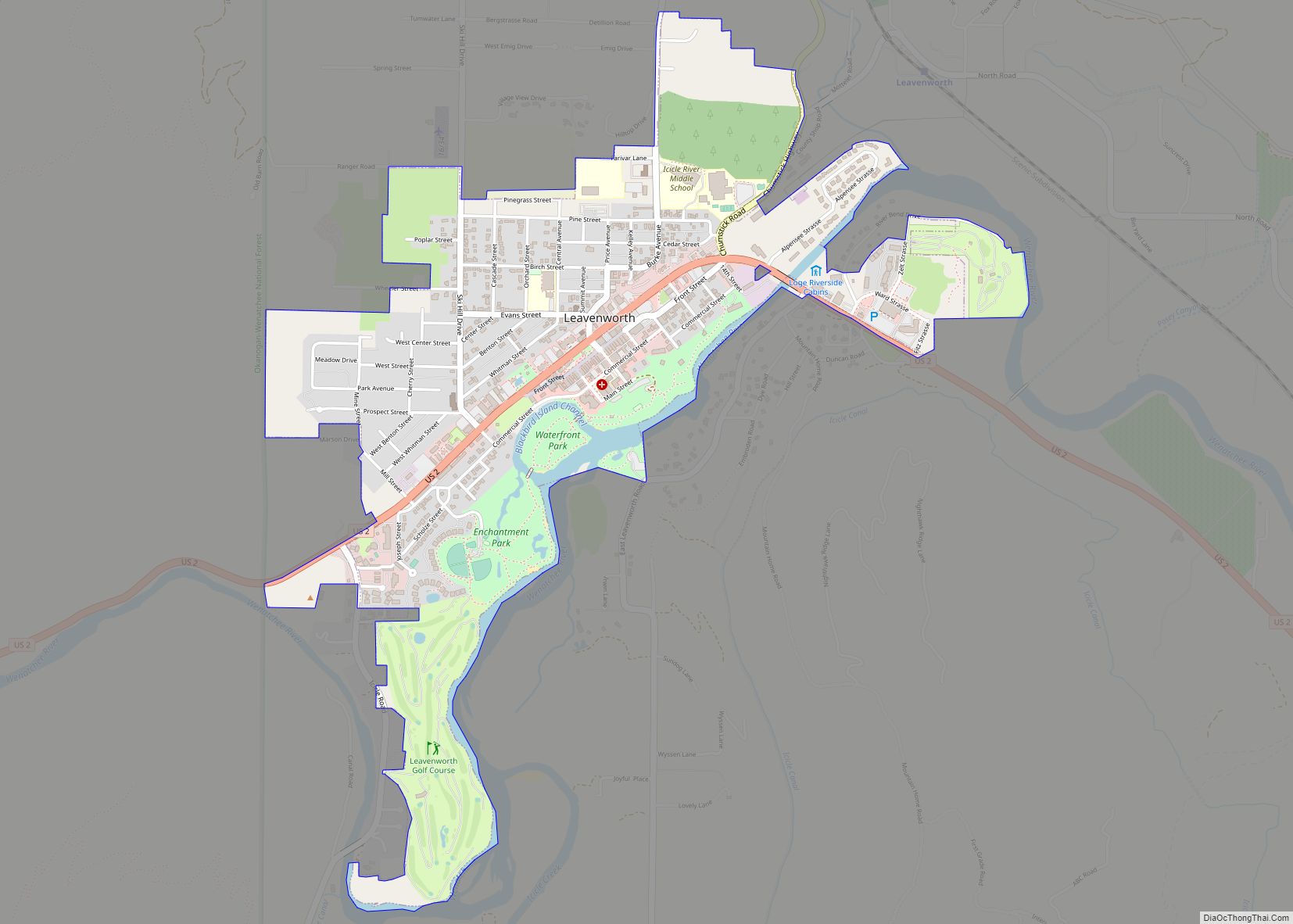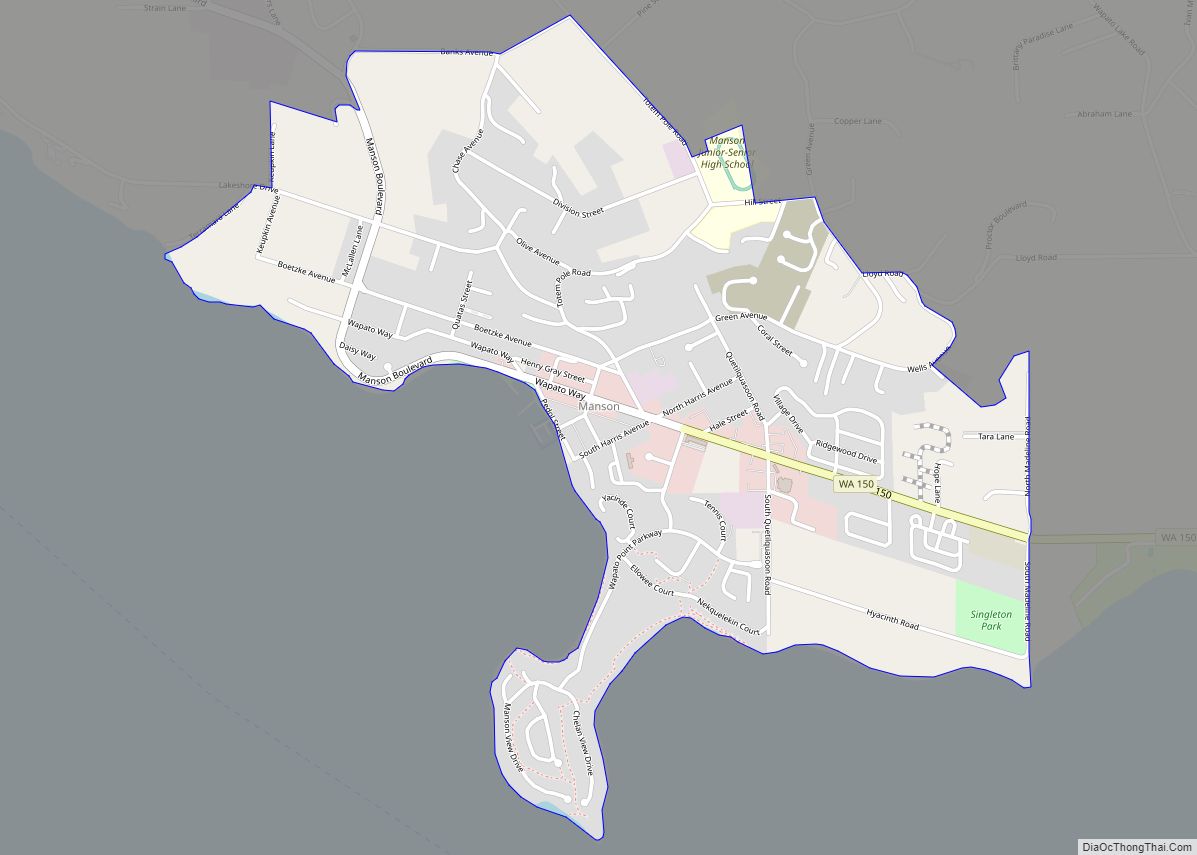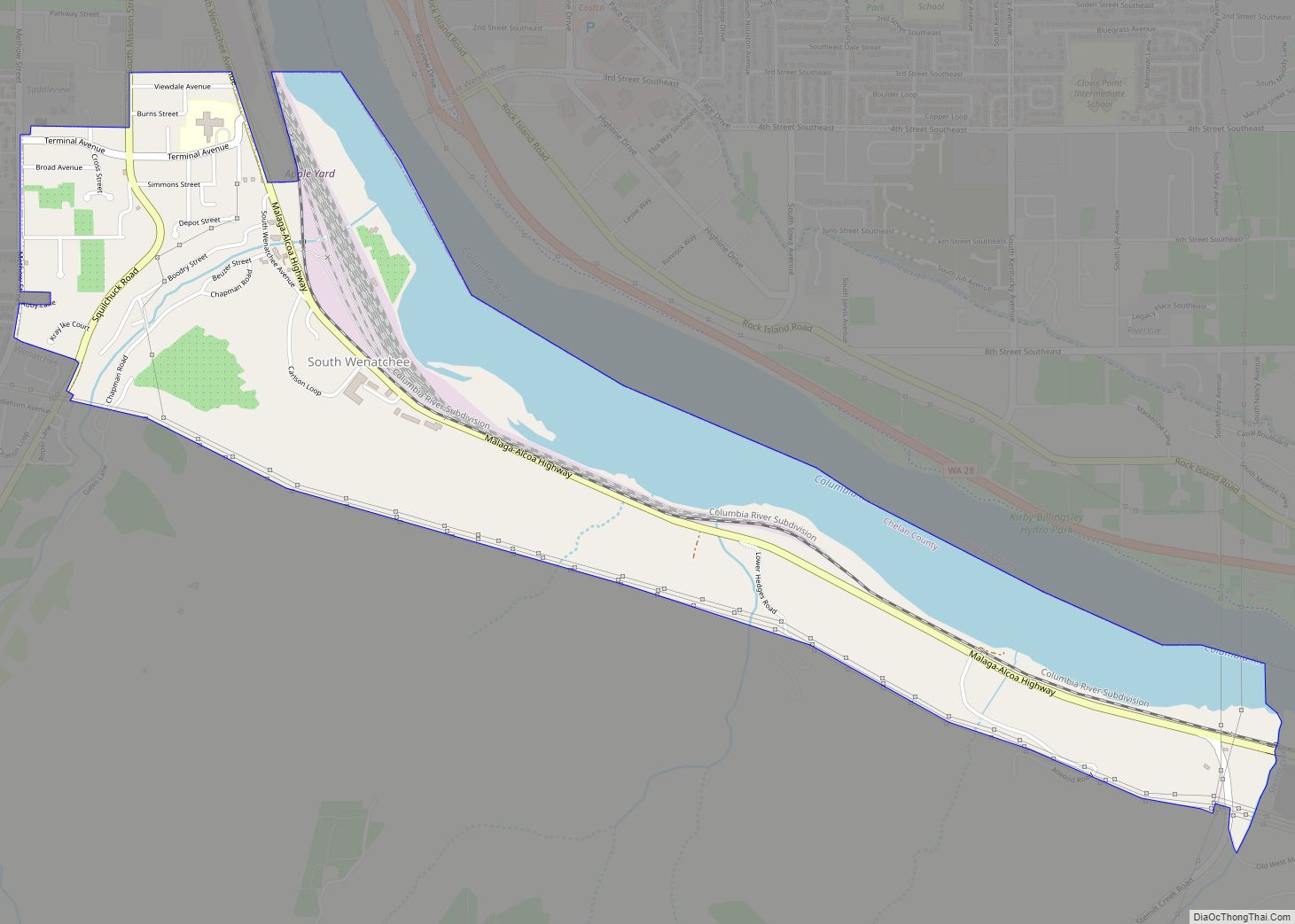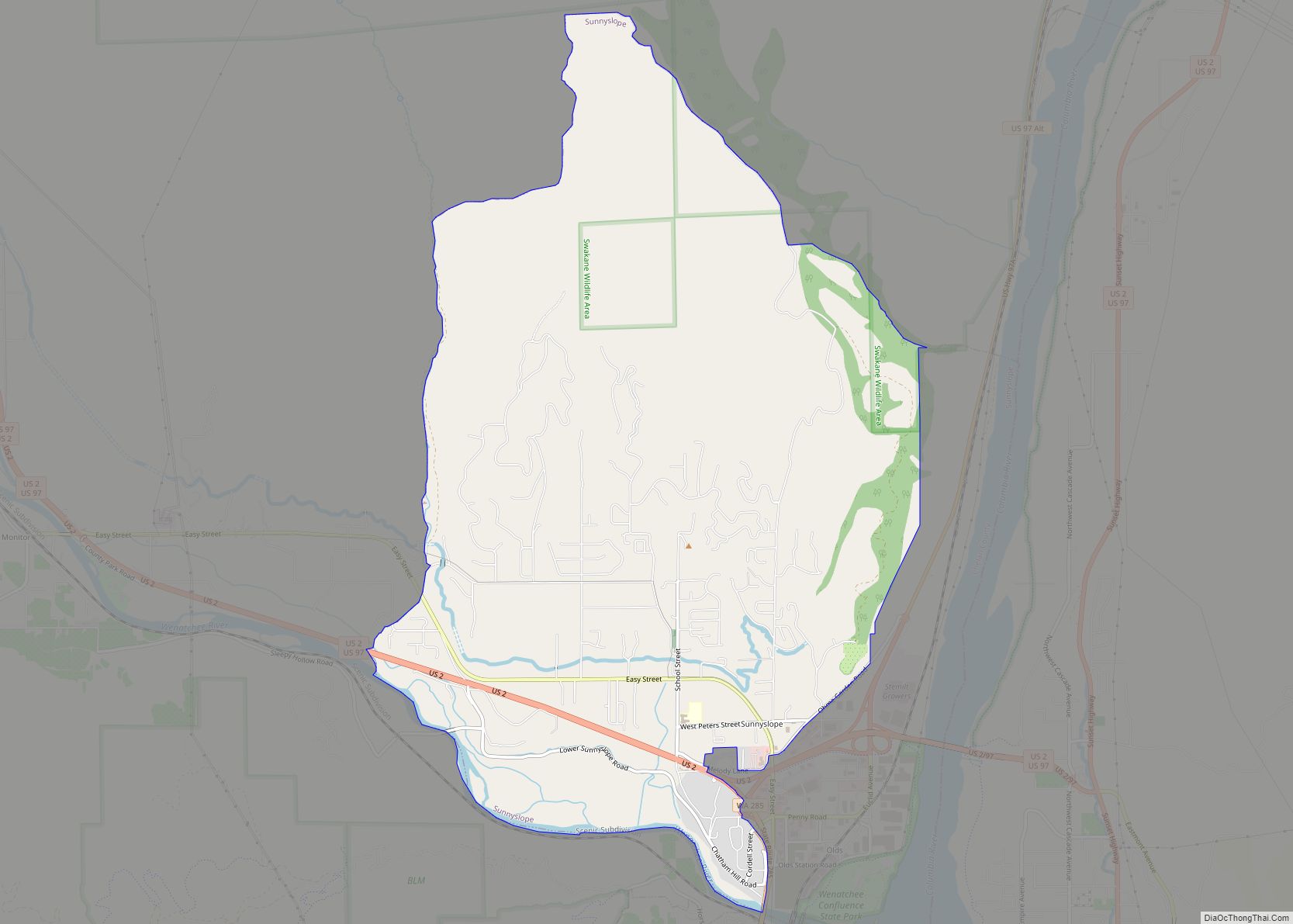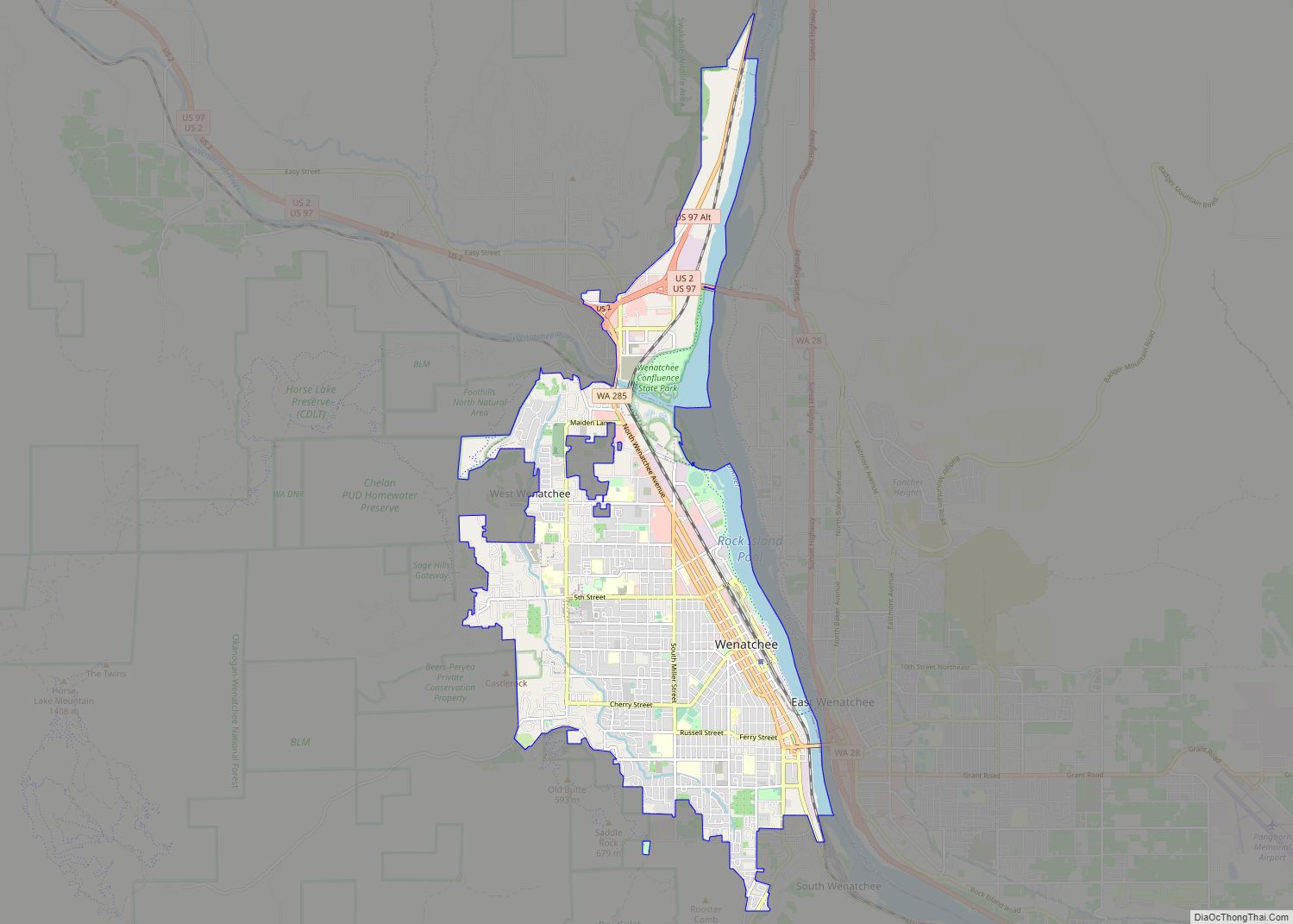Leavenworth is a city in Chelan County, Washington, United States. It is part of the Wenatchee−East Wenatchee Metropolitan Statistical Area. The population was 2,263 at the 2020 census. The entire town center is modeled on a German Bavarian village as part of a civic initiative that began in the 1960s. The area is a major, four-season tourist destination with festivals nearly every month and a multitude of events year round.
| Name: | Leavenworth city |
|---|---|
| LSAD Code: | 25 |
| LSAD Description: | city (suffix) |
| State: | Washington |
| County: | Chelan County |
| Incorporated: | September 5, 1906 |
| Elevation: | 1,171 ft (357 m) |
| Total Area: | 1.47 sq mi (3.81 km²) |
| Land Area: | 1.45 sq mi (3.76 km²) |
| Water Area: | 0.02 sq mi (0.05 km²) |
| Total Population: | 2,263 |
| Population Density: | 1,396.42/sq mi (539.20/km²) |
| ZIP code: | 98826 |
| Area code: | 509 |
| FIPS code: | 5338845 |
| GNISfeature ID: | 1521981 |
Online Interactive Map
Click on ![]() to view map in "full screen" mode.
to view map in "full screen" mode.
Leavenworth location map. Where is Leavenworth city?
History
The construction of the Great Northern Railway through the Tumwater Canyon in 1892 brought settlers to a townsite that was named “Leavenworth”. Lafayette Lamb arrived in 1903 from Clinton, Iowa, to build the second largest sawmill in Washington state.
Leavenworth was officially incorporated on September 5, 1906. A small timber community, it became a regional office of the Great Northern Railway in the early 1900s. The railroad relocated to Wenatchee in 1925, greatly affecting Leavenworth’s economy. The city’s population declined well into the 1950s as the lumber mills closed and stores relocated.
The city looked to tourism and recreation as a major economy as early as 1929, when they opened a ski jump. In 1962, the Project LIFE (Leavenworth Improvement For Everyone) Committee was formed in partnership with the University of Washington to investigate strategies to revitalize the struggling logging town. The theme town idea was created by two Seattle businessmen, Ted Price and Bob Rodgers, who had bought a failing cafe on Highway 2 in 1960. Price was chair of the Project LIFE tourism subcommittee, and in 1965 the pair led a trip to a Danish-themed town, Solvang, California, to build support for the idea. The first building to be remodeled in the Bavarian style was the Chikamin Hotel, which owner LaVerne Peterson renamed the Edelweiss after the state flower of Bavaria.
Leavenworth Road Map
Leavenworth city Satellite Map
Geography
According to the United States Census Bureau, the city has a total area of 1.25 square miles (3.24 km), of which, 1.23 square miles (3.19 km) is land and 0.02 square miles (0.05 km) is water.
Geology
Leavenworth sits on the southeast side of the North Cascades collage, which is a group of terranes that accreted to North America all about the same time. Marine fossils indicate that the terranes were probably a group of islands originating in the South Pacific hundreds of million years ago. The terranes arrived at North America about 90 million years ago in the middle of the Cretaceous period. When they smashed into their new home, they were a puzzle of north–south slices. As accretion continued, they were cut into horizontal (east-west) slices.
During the Eocene epoch, about 50 million years ago, the area was once again cut into vertical slices, creating among others, the Leavenworth fault and the Entiat fault. In between these two faults the Chiwaukum graben was created. This graben is about 12 miles wide and trends northwest from Wenatchee for about 50 miles. As the graben dropped, it began to fill with clastic sediment from the surrounding hills, creating the Chumstick formation. About 30 million years ago in the Oligocene epoch, the Chiwaukum graben underwent compressional deformation creating several folds in the region that are visible today. Leavenworth is on the western edge of the graben; in fact, the Leavenworth fault runs through the western edge of town. The area to the west and southwest of Leavenworth was created in the middle Cretaceous period with the uplift of the Mount Stuart batholith, forming the granite rock seen today in Icicle Ridge and Tumwater Mountain.
During the Pleistocene and into the Holocene epochs, an alpine glacier originating from the southwest in the Mount Stuart range made its way to where the town is today. Leavenworth sits on the terminal moraine of that glacier. The residential parts of town display many glacial erratics that originated 20 miles up the Icicle Valley near Mount Stuart.
About 19,000 years ago, a large rock slide dammed the Columbia River near Rock Island, just south of Wenatchee. The temporary dam, in conjunction with one of the Lake Missoula floods, caused the water to flow back up the Wenatchee Valley, where it was stopped by the glacier at Leavenworth. As the leading edge of the glacier interacted with the flood, ice rafts formed carrying granite erratics from the Stuart batholith, which ended up in the town of Dryden about 15 miles down the valley from Leavenworth. As the glacier retreated, the south side of Leavenworth was a lake dammed up by the moraine. The bridge on the east side of town is a good vantage point to see where the Wenatchee River cuts through the moraine today.
Climate
Leavenworth has a continental Mediterranean climate (Köppen Dsb) with summers characterized by hot, sunny days and chilly nights, and cold, snowy winters.
During the summer, the weather is typically anticyclonic due to the presence of the North Pacific anticyclone, with resultant clear skies and large diurnal temperature ranges. Rainfall is limited by the Cascade rain shadow as well as by the anticyclone, and all months from May to October have recorded zero precipitation on occasions, including 114 consecutive days without precipitation from June to October 2003. When a continental flow enters the Columbia Basin, the temperature can be very hot during the day, with the hottest temperature being 110 °F or 43.3 °C during the heatwave of July 1941. However, on cooler, stiller days, summer nights can still be cold and frosts have been recorded as early as August 29 in 1980.
The fall months have steady cooling and a gradual increase in the frequency of frontal storms producing rainfall, while winter weather is typically cold and snowy, with an annual mean snowfall of 90.1 inches or 2.29 metres and a maximum monthly total of 92.3 inches (2.34 m) recorded in December 1996. The snowiest season has been from July 1968 to June 1969 with 217.2 inches (5.52 m) and the least snowy from July 1962 to June 1963 when just 19.4 inches (0.49 m) of snow fell. The lowest temperature recorded in Leavenworth was −36 °F (−37.8 °C) on December 30, 1968, but typically five mornings per year will fall at or below 0 °F or −17.8 °C.
The wettest “rain year” was recorded from July 1955 to June 1956 with a total of 41.13 inches (1,044.7 mm) and the driest was from July 1929 to June 1930 with 11.77 inches (299.0 mm). The spring months see gradual warming and drying, though frosts remain frequent well into the start of April. During an average year, over 168 mornings see temperatures fall to freezing or below. May 16 is the average date of last freeze; 2016 was the first year to record a last frost in March.
See also
Map of Washington State and its subdivision:- Adams
- Asotin
- Benton
- Chelan
- Clallam
- Clark
- Columbia
- Cowlitz
- Douglas
- Ferry
- Franklin
- Garfield
- Grant
- Grays Harbor
- Island
- Jefferson
- King
- Kitsap
- Kittitas
- Klickitat
- Lewis
- Lincoln
- Mason
- Okanogan
- Pacific
- Pend Oreille
- Pierce
- San Juan
- Skagit
- Skamania
- Snohomish
- Spokane
- Stevens
- Thurston
- Wahkiakum
- Walla Walla
- Whatcom
- Whitman
- Yakima
- Alabama
- Alaska
- Arizona
- Arkansas
- California
- Colorado
- Connecticut
- Delaware
- District of Columbia
- Florida
- Georgia
- Hawaii
- Idaho
- Illinois
- Indiana
- Iowa
- Kansas
- Kentucky
- Louisiana
- Maine
- Maryland
- Massachusetts
- Michigan
- Minnesota
- Mississippi
- Missouri
- Montana
- Nebraska
- Nevada
- New Hampshire
- New Jersey
- New Mexico
- New York
- North Carolina
- North Dakota
- Ohio
- Oklahoma
- Oregon
- Pennsylvania
- Rhode Island
- South Carolina
- South Dakota
- Tennessee
- Texas
- Utah
- Vermont
- Virginia
- Washington
- West Virginia
- Wisconsin
- Wyoming
